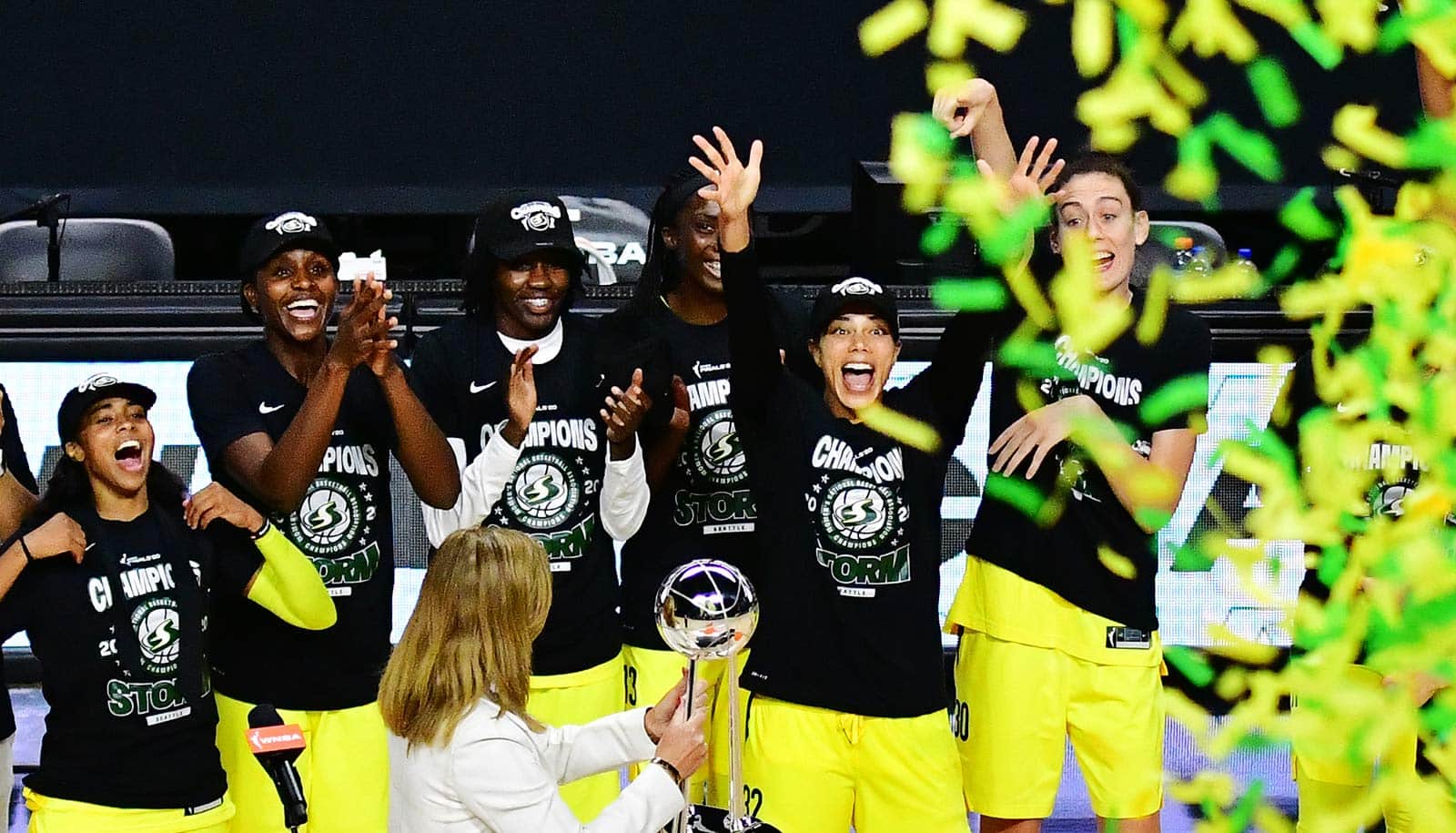Roughly one-third of parents think boys are better at sports than girls are, a new poll finds.
The research indicates that gender stereotypes and double standards, where female athletes are treated differently or aren’t taken as seriously as male counterparts, persist.
Researchers polled more than 3,000 boys and girls aged 7 to 17 and their parents/guardians across the country and found that parents of youth who have never played sports are more likely to believe that girls are not as competitive as boys and that sports are more important to boys than girls.
The Women’s Sports Foundation, in partnership with The Dick’s Sporting Goods Foundation, has shared a report on the findings.
While the study did not specifically look at the sexualization of girls in sports, these stereotypes can lead to the type of sexualization of female athletes evident in the Olympic uniform controversy, in which the Norwegian women’s beach handball team faced a fine for refusing to play in skimpy, mandated bikini outfits, says coauthor Philip Veliz of the University of Michigan School of Nursing.
Girls in (and out) of sports
The poll indicates that gender stereotypes and the dearth of female coaches as role models are among the biggest reasons that girls quit or don’t participate in sports, Veliz says.
“The average age that kids enter sports is six, which requires heavy parental involvement,” Veliz says. “If you believe that boys are better than girls, you may be taking girls to a different activity or not doing sports at all.”
Girls (43%) are more likely to have never played sports than boys (35%) and less likely to be currently playing sports—36% of girls compared to nearly 46% of boys. Overall, about 40% of youth surveyed said they currently play sports.
“Sport is the most popular extracurricular activity in the United States for both boys and girls. Yet, we see this gender gap in participation persist, and parents may be driving some of this,” says Veliz, a research assistant professor at the School of Nursing and Institute for Research on Women and Gender, and associate director of the Sport, Health, and Activity Research and Policy Center.
The poll results indicate African American and low-income youths overall, but especially girls, were least likely to be current players, and most likely to have never played or to have dropped out. Boys and girls both reported teasing, but for girls, the teasing was worse for teens than during their younger years.
Coach Mom?
Veliz says that another problem for girls is the relative lack of female coaches. Only 58% of girls had a female coach, compared to 88% of boys who reported having a male coach.
“We’re seeing a big gender disparity between who’s coaching boys and girls,” he says. “We need to ask why we don’t have more female coaches. We should have 88% of girls saying they have a female coach. However, we still see females being underrepresented in coaching at the youth level and beyond.”
Veliz says it’s important to convince parents that boys and girls are equally interested in sports, and also to eliminate barriers to entry for female coaches. As more female athletes have daughters, this will naturally improve, he says.
“If you have a mom who used to play sports, she will be more likely to say, ‘I want my daughter to participate in these activities like I did,'” he says.
Another surprise was that few kids reported quitting sports because of injury for either boys or girls. However, of the 16% of kids who reported experiencing a concussion from sports, over a third quit. While this finding was not broken down by gender, it may be a factor that could differentially funnel girls out of sport, Veliz says.
Indeed, the study finds that the average age of kids who quit sports for any reason was 11. This could mean that sports became something different or that it was no longer fun.
“One of the problems with sports in the United States is it’s really about the competition, and some kids just want to play for fun,” says Veliz, who would like to see kids play until they graduate. “Sports is really the main source of physical activity for kids. It will set the stage for them as they grow up.”
Coauthors are from the University of South Carolina and D’Youville College.
Source: University of Michigan


